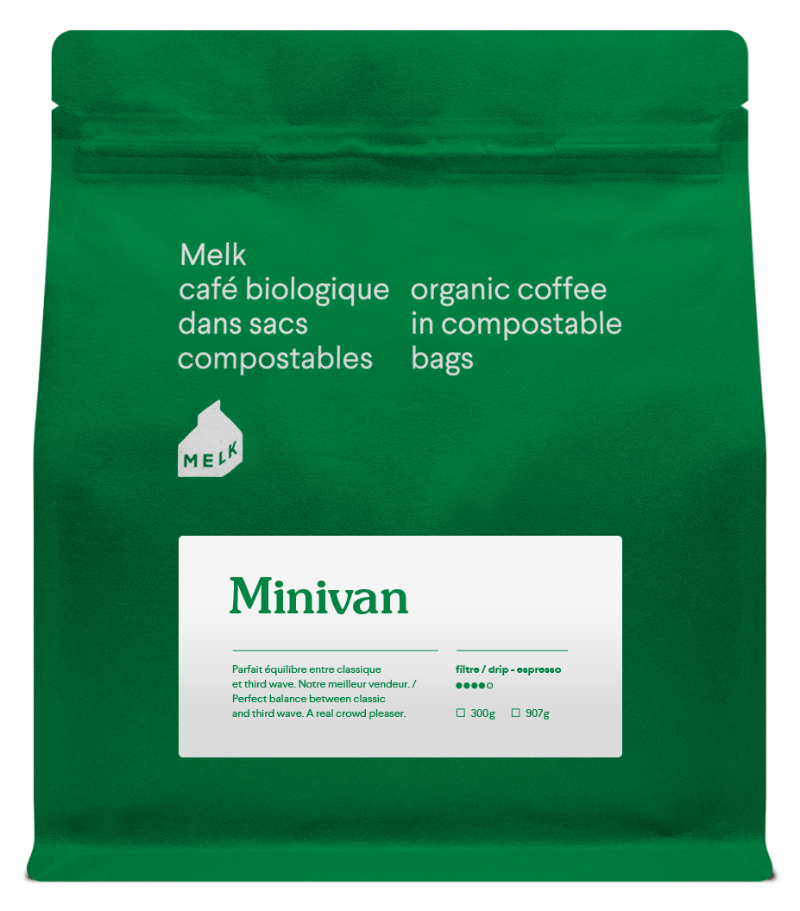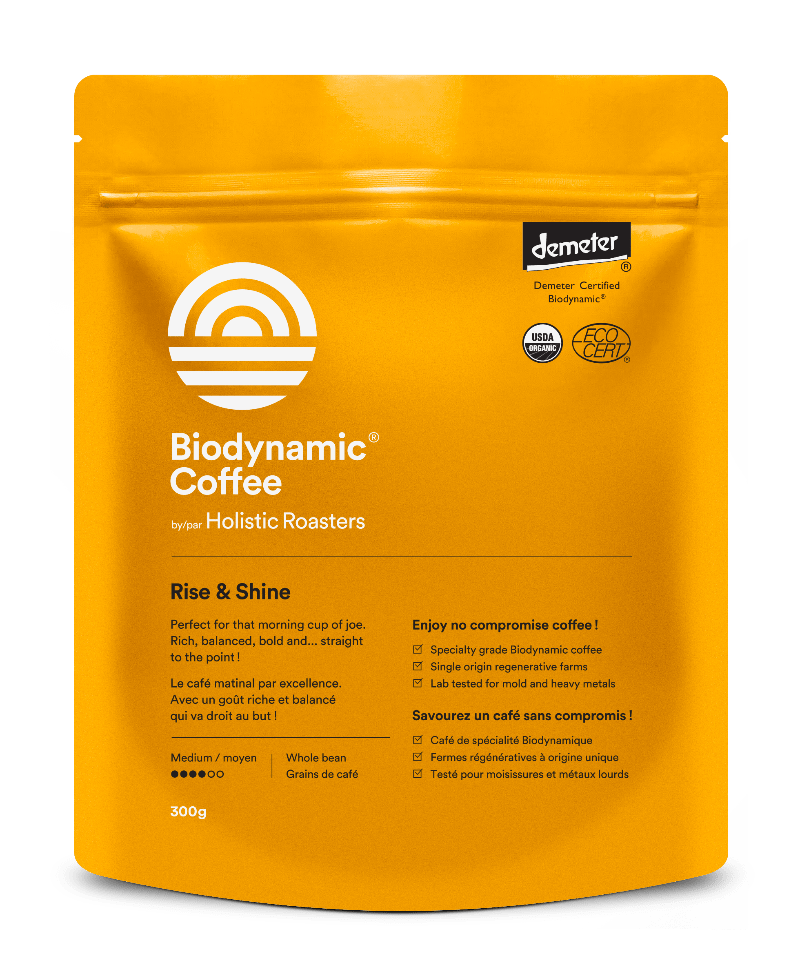What Makes a Coffee "Low Histamine"? A Complete Guide
Listen while you browse:
Google's Deep Dive Podcast on Low Histamine Coffee: A Guide for Sensitive Drinkers
Coffee, Histamine and MCAS
For individuals with histamine intolerance or mast cell activation syndrome (MCAS), finding a coffee that supports health (without triggering symptoms) can feel like searching for a needle in a haystack. At Holistic Roasters, we've heard this concern from many of our customers, and we've designed our entire sourcing and roasting process with you in mind.

The Bottom Line
Not all coffee is created equal when it comes to histamine. Through seasonal freshness, rigorous testing, clean processing, and Biodynamic farming, we've created what many consider the cleanest, lowest histamine coffee available. This guide explains exactly what that means, and why it matters for your health.
🌿 What Is Histamine, and Why Does It Matter?
Histamine is a natural compound involved in immune response, digestion, and neurological function. It's also found in varying amounts in certain foods, especially those that are aged, fermented, or improperly stored.
Common Foods on the Histamine Scale
Clean, fresh coffee falls in the low histamine category!
🔬 The Science
People with histamine intolerance often lack enough DAO (diamine oxidase) or HNMT enzymes to break down histamine effectively. This leads to a buildup that triggers symptoms.
🎯 Common Triggers
Aged cheeses, wine, fermented foods, smoked meats, and yes, improperly stored or moldy coffee can all trigger histamine reactions in sensitive individuals.
⚡ Symptoms
Headaches, skin flushing, hives, digestive issues, brain fog, anxiety, and rapid heartbeat are common signs of histamine overload.
Coffee's Unique Position
Unlike aged cheeses or wine, coffee doesn't have to be high in histamine. The key lies in how it's grown, processed, stored, and roasted. When done right, coffee can actually be a low-histamine beverage that many sensitive individuals can enjoy.
🛡️ What Makes Coffee Low in Histamine?
Creating truly low histamine coffee isn't about a single factor, it's the result of multiple quality-focused choices throughout the entire journey from farm to cup.
1. Seasonal Freshness = Fewer Histamines
Histamine and other biogenic amines form when coffee beans sit in storage, especially in warm or humid conditions. At Holistic Roasters:
- Green coffee is sourced from family-owned farms with complentary seasonal harvests you're getting Biodynamic coffee from the most recent harvest worldwide
- We roast in small batches several times per week
- You receive coffee at peak freshness with the lowest possible histamine levels
2. Mold- and Mycotoxin-Free
Mold is one of the most common histamine triggers in coffee. Every batch of our Biodynamic coffee is lab-tested for:
- Ochratoxin A - a nephrotoxic mycotoxin
- Aflatoxin B1 - a potent carcinogen
- Total mold counts and specific pathogenic species
We maintain a controlled, clean environment from roasting through shipping.
3. Comprehensive Contaminant Testing
We go beyond industry standards to test for contaminants that matter most to sensitive individuals:
- E. coli
- Salmonella spp.
- Listeria monocytogenes
- Arsenic
- Cadmium
- Mercury
- Lead
4. Washed Processing = Cleaner Beans
Washed (wet) processed coffee is fermented in water and thoroughly rinsed, resulting in:
- Lower levels of biogenic amines
- Reduced microbial residues
- Cleaner flavor profile
Our core offerings — Rubicon, Rise & Shine, and French Roast — use washed processing.
5. Swiss Water Decaf for Ultra-Sensitive Systems
For those especially sensitive to caffeine or histamines, our Bon Décaf:
- Uses the 100% chemical-free Swiss Water Process
- Made from certified organic, washed beans
- Undergoes the same rigorous testing as all our coffees
6. Thoughtful Roasting for Tolerance
Roasting helps reduce biogenic amines, including histamine. We carefully roast to:
- Maximize histamine reduction (medium and dark roasts)
- Preserve beneficial compounds
- Avoid over-roasting that creates bitter, irritating compounds
🔍 Our Testing Standards: Transparency You Can Trust
| Feature | Why It Matters | Holistic Roasters Approach |
|---|---|---|
| Fresh harvests | Less time for histamine formation | < 6 months from harvest delivery |
| Mold/mycotoxin testing | Avoids major histamine triggers | All harvests lab-tested |
| Microbial & heavy metal testing | Safer for sensitive systems | Includes E. coli, lead, arsenic & more |
| Washed processing | Lower microbial residues | Our Biodynamic coffees are washed (wet processed) |
| Solvent-free decaf | No chemical residues | Swiss Water Process only |
| Clean roasting | Reduces biogenic amines | Medium-to-dark, never burnt |
Lab Report Transparency
Unlike many coffee companies that keep testing results hidden, we believe in complete transparency. Every harvest of Holistic Roasters coffee comes with available lab reports showing:
- Mycotoxin levels (ochratoxin A, aflatoxin B1)
- Microbiological safety (pathogen testing)
- Heavy metal analysis
- Pesticide residue testing (always negative for our Biodynamic coffees)
Want to see our latest lab results? We're proud to share them here
Why Processing Method Matters for Histamine
The way coffee is processed after harvest significantly influences histamine levels. Understanding these differences can help you make the best choice for your sensitivity level.
💧 Washed (Wet) Process
Best for histamine intolerance
- Fermented in clean water tanks
- Thoroughly rinsed to remove mucilage
- Lower microbial activity
- Cleaner, brighter flavor profile
Our picks: Rubicon, Rise & Shine, French Roast
☀️ Natural (Dry) Process
Higher histamine risk
- Dried with cherry intact
- Extended fermentation period
- Higher potential for mold growth
- Fruitier, more complex flavors
Better avoided if highly sensitive
The Biodynamic Advantage
Beyond processing, our Biodynamic farming methods contribute to lower histamine potential:
- No synthetic pesticides that can stress plants and increase mold susceptibility
- Healthier soil biology produces more resilient plants
- Biodiversity requirements create natural pest resistance
- Holistic farm management reduces need for interventions
How to Choose the Right Coffee for Your Sensitivity Level
Select Your Sensitivity Level:
🌟 Pro Tips for Histamine-Sensitive Coffee Drinkers
- Start small: Begin with 4-6 oz and see how you feel
- Timing matters: Drink coffee with food, not on empty stomach
- Fresh is best: Use coffee within 3-6 weeks of roast date
- Storage counts: Keep in airtight container, away from heat/moisture
- Track reactions: Keep a symptom diary to identify patterns
Symptom Checker: Is Your Coffee Triggering Histamine Reactions?
Check any symptoms you experience within 2 hours of drinking coffee:
Frequently Asked Questions About Low Histamine Coffee
Histamine intolerance occurs when your body cannot effectively break down histamine, a natural compound involved in immune response and digestion. This happens due to:
- Reduced activity of DAO (diamine oxidase) enzyme
- Reduced activity of HNMT (histamine N-methyltransferase) enzyme
- Excessive histamine production or intake
This leads to symptoms like headaches, skin irritation, digestive issues, and brain fog when consuming histamine-rich foods or beverages. It's estimated that 1-3% of the population has histamine intolerance, though many cases go undiagnosed.
Common signs that coffee may be triggering histamine reactions include:
- Timing: Symptoms appear within 30 minutes to 2 hours after drinking coffee
- Consistency: Reactions happen regularly with certain coffees but not others
- Symptoms: Headaches, flushing, rapid heartbeat, digestive upset, or skin reactions
To confirm, try these steps:
- Keep a detailed food and symptom diary for 2 weeks
- Eliminate coffee for 1 week and note any improvements
- Reintroduce with certified clean, fresh coffee and compare reactions
- Consider working with a healthcare provider familiar with histamine intolerance
Freshness is crucial because histamine and other biogenic amines form over time through:
- Bacterial activity: As coffee ages, bacteria can produce histamine
- Enzymatic processes: Natural enzymes continue working post-harvest
- Oxidation: Exposure to air accelerates degradation
Research shows that histamine levels in stored foods can increase significantly within weeks, especially in warm or humid conditions. That's why we maintain strict freshness standards:
- Green coffee is sourced from family-owned farms with complentary seasonal harvests
- Roasted weekly in small batches
- Shipped within days of roasting
- Recommend consumption within 2-3 weeks
The processing method significantly impacts histamine potential:
Washed (Wet) Process - Lower Histamine Risk:
- Coffee cherries are de-pulped immediately after harvest
- Beans fermented in clean water tanks for 12-48 hours
- Thoroughly washed to remove all fruit residue
- Dried on raised beds or patios with good airflow
- Result: Lower microbial activity, reduced fermentation byproducts
Natural (Dry) Process - Higher Histamine Risk:
- Whole cherries dried in the sun for 2-4 weeks
- Extended fermentation occurs inside the fruit
- Higher risk of uncontrolled microbial growth
- More susceptible to mold if weather is humid
- Result: Potentially higher biogenic amine content
For histamine-sensitive individuals, washed coffees are typically the safer choice.
Based on processing method, roast level, and customer feedback, here are our recommendations:
Best Options (Washed Process, Well-Tolerated):
- Rubicon: light roast, washed process, bright and clean
- Rise & Shine: Medium roast, washed process, smooth and balanced
- French Roast: Dark roast, washed process, lowest acidity
Ultra-Gentle Option:
- Bon Décaf: Swiss Water Process, washed beans, no caffeine to complicate reactions
All our coffees are:
- Lab-tested for mold, mycotoxins, and contaminants
- Sourced from current seasonal harvests
- Roasted fresh weekly
- Stored in optimal conditions
Start with our French Roast if you're highly sensitive, as the darker roast reduces histamine and acidity.
Absolutely! We believe in complete transparency and are happy to share our lab results. Here's what we test for and how to get the information:
What We Test:
- Mycotoxins: Ochratoxin A and Aflatoxin B1
- Microbiological: E. coli, Salmonella, Listeria
- Heavy Metals: Lead, cadmium, arsenic, mercury
- Pesticide Residues: Biodynamic farming eliminates the need for herbicides, pesticides, fungicides and chemical fertilizers (zero residue)
How to Get Results:
- Email us at support@holisticroasters.com with your request
- Specify which coffee and batch you're interested in
- We'll send you the complete lab report within 24 hours
We test every harvest and maintain comprehensive records. Your health and trust matter to us, and we're proud of our testing standards.
☕ A Cup You Can Feel Good About
Whether you're living with histamine intolerance, navigating MCAS, or simply want a cleaner, better coffee experience, Holistic Roasters is here to serve.
Our commitment to regenerative agriculture, clean sourcing, rigorous testing, and seasonal freshness means you can enjoy every cup with confidence — knowing we've done the hard work to protect your health, your palate, and the planet.
Use code LOWHISTAMINE for 10% off your first order of our lab-tested, Biodynamic coffee.
Shop Low Histamine CoffeeReferences & Further Reading
- Maintz, L., & Novak, N. (2007). "Histamine and histamine intolerance." The American Journal of Clinical Nutrition, 85(5), 1185-1196. doi: 10.1093/ajcn/85.5.1185 | PubMed
- Comas-Basté, O., Sánchez-Pérez, S., Veciana-Nogués, M. T., Latorre-Moratalla, M., & Vidal-Carou, M. (2020). "Histamine Intolerance: The Current State of the Art." Biomolecules, 10(8), 1181. doi: 10.3390/biom10081181 | PMC Full Text
- Schnedl, W. J., & Enko, D. (2021). "Histamine Intolerance Originates in the Gut." Nutrients, 13(4), 1262. doi: 10.3390/nu13041262 | PMC Full Text
- Hrubisko, M., Danis, R., Huorka, M., & Wawruch, M. (2021). "Histamine Intolerance—The More We Know the Less We Know. A Review." Nutrients, 13(7), 2228. doi: 10.3390/nu13072228 | PubMed
- Reese, I., Ballmer-Weber, B., Beyer, K., et al. (2017). "German guideline for the management of adverse reactions to ingested histamine." Allergo Journal International, 26, 72–79. doi: 10.1007/s40629-017-0011-5
- Schink, M., Konturek, P. C., Tietz, E., et al. (2018). "Microbial patterns in patients with histamine intolerance." Journal of Physiology and Pharmacology, 69(4), 579-593. doi: 10.26402/jpp.2018.4.09 | PubMed
- Histamine Intolerance UK. (2020). "The Food List." Available at: https://www.histamineintolerance.org.uk/about/the-food-diary/the-food-list/
- Medical News Today. (2025). "Histamine intolerance: What is it, symptoms, causes, and more." Available at: https://www.medicalnewstoday.com/articles/322543
- Cleveland Clinic. (2023). "Histamine Intolerance: Causes, Symptoms & Treatment." Available at: https://my.clevelandclinic.org/health/diseases/histamine-intolerance





